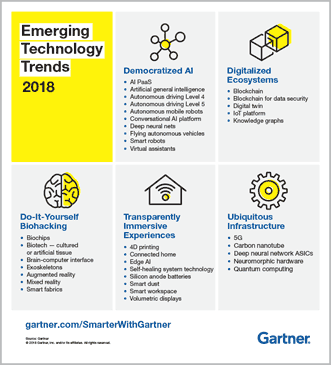In today’s financial services organizations, 90 percent of the data stored is never accessed. That’s a lot of data gone missing that could offer unique insight into how to improve operational performance and generate new revenues.
Many financial services organizations do not possess the foundational technologies needed to analyze data properly. Here is a short list of weaknesses that plague many organizations:
- Core computing infrastructure
- Network and data security
- Management commitment to be data centric
- Qualified data scientists
- Corporate-wide analytical software
Those who follow Gartner’s Hype Cycles (how a technology or application will evolve over time) know that technology solutions that mine structured and unstructured data are widespread and much hyped. You’ve heard often-used terms including Big Data, artificial intelligence (AI), machine learning, predictive analytics, etc. And you’ve heard of new platform technologies that can better gather and organize data including blockchain, in-memory databases, IoT, deep neural networks, etc.
The challenge is using these technologies to capture and interpret mission critical data. It’s not easy though. The quantities are massive, and the complexity even greater.
There are many case studies of financial services companies that have used new technology tools to achieve impressive results. The issue is that these results are not pervasive. Many of the highlighted projects are micro projects within large organizations. Yes, the case studies show the potential, but there are still many hills to climb.
FinTech executives of established companies need to figure how to evolve their organizations to embrace a data centric culture. To be a data centric company, data must flow deep and wide within the organization – think Amazon. While cursory one-off projects serve as proof points, FinTechs need to take a more holistic view.
The Gartner Group illustration below highlights emerging technology trends, three of which are important to the FinTech ecosystem: Democratized AI, Digitalized Ecosystems and Ubiquitous Infrastructure. At their core, these technology trends foster the concepts of easy data access by all, secure data storage and faster computing which together will drive more useful data to decision makers than ever before.

When simplified, these three trends boil down to: Use data analytics on a secure platform that enables all relevant data to be accessible.
The challenge for organizations in the FinTech ecosystem at this point is to catch up. FinTech organizations have been notoriously slow in adopting technologies that drive data closer to users and decision makers. The past five years have brought progress, though. In TAG FinTech’s 2017 Data Analytics/Big Data in Financial Services report, Georgia FinTech organizations showed progress in becoming more data centric. Here is a summary of the research findings:
- ROI from data analytics programs is improving at FinTech companies.
- Management commitment to data analytics investments is improving.
- While Risk Management and Fraud Prevention continue to lead data analytics investments, other functions within the FinTech organization such as the Call Center, Customer Service, IT, Sales and Marketing are getting stronger.
- FinTech executives are maturing their thinking on how to productize and monetize data analytic services.
The bottom line: Data analytics cannot be a side project. Decision-centric data must course through the company as its life blood.
Now is the time to amplify this dialogue. I encourage you to join us for FinTech South at Mercedes-Benz Stadium April 22-23. Across 24 breakout sessions and more than 75 speakers, we’ll be discussing these and other cutting-edge topics with thought leaders from Cardlytics, Chich-Fil-A, Fiserv, FIS, Verizon and many other professionals providing useful insights to help evolve your organization. A quick look at the agenda and speakers makes clear why over 1400 FinTech leaders plan to attend.
In addition, stay tuned in the coming year for an updated version of TAG FinTech’s Data Analytics study, which will assess the industry’s progress on this critical endeavor.




































